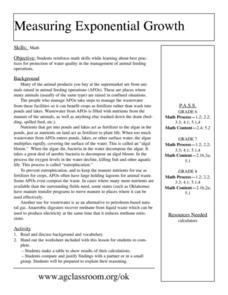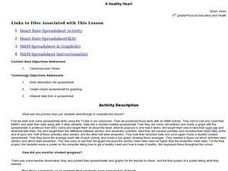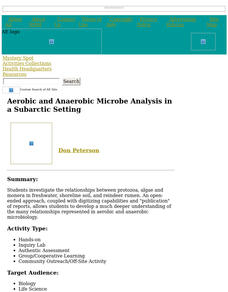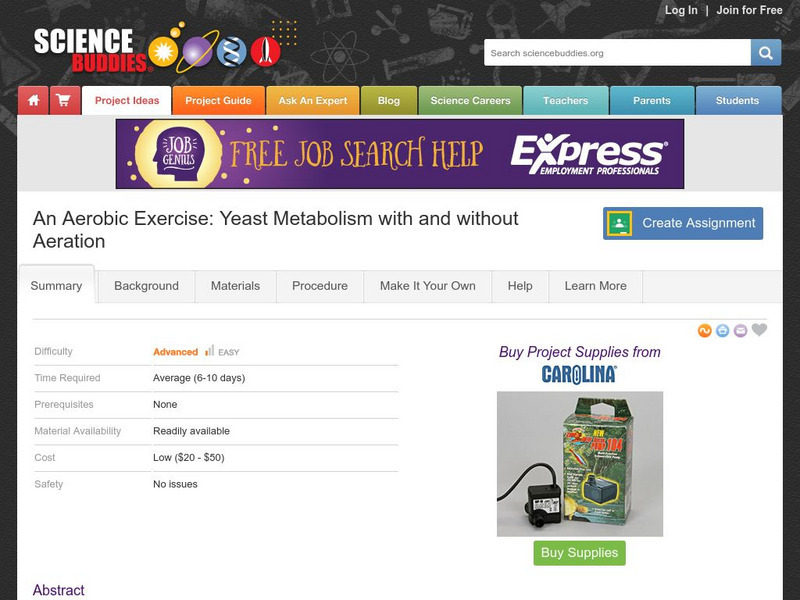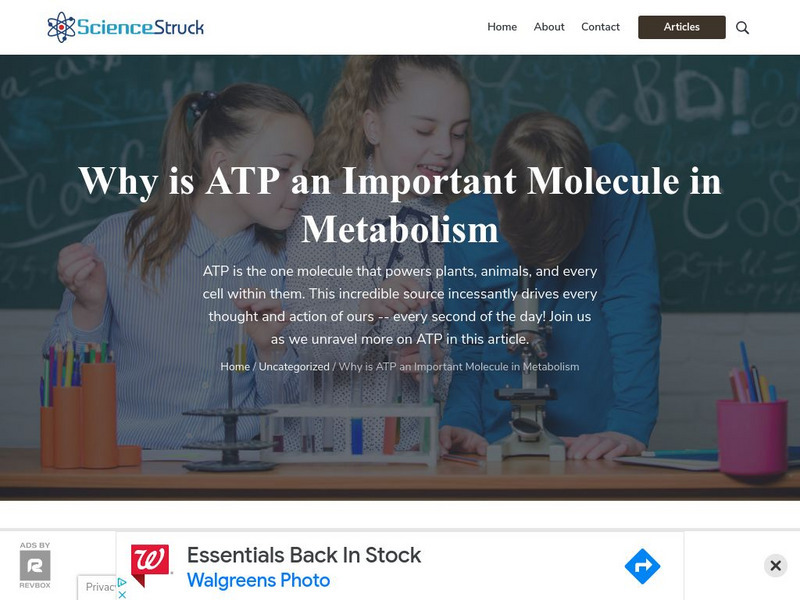Curated OER
Your Energy Out
How much activity is appropriate for elementary school youngsters? What kind of activities do they need to do? Check out the Physical Activity Guidelines for Americans. Look to see what are age-appropriate activities for each grade...
Curated OER
Train the Body, Train the Brain
An article from the New York Times, 2010, titled "Phys Ed: Can Exercise Make Kids Smarter?" is the springboard for the six short-answer questions posed by The Learning Network. Have your class read the article, answer the questions, and...
Curated OER
De"compost"ition
High schoolers develop an understanding of the decomposition process and the parameters which influence the rate at which it occurs.
Curated OER
Measuring Exponential Growth
Students reinforce math skills while learning about best practices
for protection of water quality in the management of animal feeding
operations. They make a table to show results of their calculations and compare and justify findings...
Curated OER
Bacteria: Friend or Foe?
Students examine a variety of environmental and industrial roles of bacteria. explore where bacteria can be found and distinguish bacteria from other organisms.
Curated OER
Review of Cell Respiration
In this cellular worksheet students complete a series of multiple choice questions on cell respiration, proteins and photosynthesis.
Curated OER
Two Kingdoms of Bacteria
For this bacterial growth worksheet, 9th graders name and describe the three types of bacteria found. Then they label the figure of the bacterium by writing the correct term next to each number. Students also describe the difference...
Curated OER
Respiration
Students explore Adenosine Triphosphate and how energy is released. They examine the basic process of cellular respiration and draw its chemical formula. After describing cellular respiration and photosynthesis, students compare and...
Curated OER
Are you going to eat that?
Students identify and define composting. STudents compare and contrast aerobic and anaerobic composting. Students illustrate the benefits of composting and other methods to reuse, recycle, reduce, and respond. Students identify through...
Curated OER
A Healthy Heart
Sixth graders create a spreadsheet using specific data. A speaker comes to discuss the heart, and the difference between anaerobic and aerobic activity. They make posters to encourage a healthy heart lifestyle.
Curated OER
Get in Shape: Exercise Daily
Students do four different exercises followed by a one lap run and four minute aerobic dance.
Curated OER
Aerobic and Anaerobic Conditioning
Students view the A.D.A.M. computer simulation of aerobic and anaerobic exercise. They break into groups and members brainstorm and list as many aerobic and anaerobic exercises as possible in five minutes.
Curated OER
Aerobic and Anaerobic Microbe Analysis in a Subarctic Setting
Students investigate the relationships between protozoa, algae and monera in freshwater, shoreline soil, and reindeer rumen. They publish reports of their findings.
Curated OER
Microbiology
In this biology worksheet, students identify and locate various vocabulary terms pertaining to microbiology. There are 54 biology terms located in the word search.
Curated OER
Aerobic Sock Darts
Students, in groups, have 2 hoops set up about 8-10 feet apart and across from each other. Each group tries to get as many darts to land inside the hoops as possible in the time limit.
Michigan State University
Michigan State University: Digital Learning Center for Microbial Ecology: Microbe Zoo: Poo Corner
A light-hearted and informative section about the role of microorganisms in decomposing human waste. It has a colorful, clickable graphic aiding in navigation of the site. Fun and informative.
Science Buddies
Science Buddies: An Aerobic Exercise: Yeast Metabolism and Aeration
This is a straightforward project on glucose metabolism in yeast. You'll grow yeast under aerobic and anaerobic conditions and measure carbon dioxide output to assess metabolic efficiency.
Other
New Brunswick Waste Management /"Backyard Magic"
Comprehensive description of the environmental benefits of composting solid waste. Complete directions for composting, detailed description of composting chemistry, suggestions for applications of humus, question and answer page,...
Department of Defense
Do Dea: Physical Fitness Activity
Exercise must be performed regularly throughout life to achieve the benefits of physical fitness, wellness, and disease prevention. In this self-guided unit, you will be introduced to the components of fitness, principles of exercise,...
Science Struck
Science Struck: Why Is Atp an Important Molecule in Metabolism
A very detailed discussion of ATP. Looks at its structure, how it works, the reactions that take place that use it or produce it, the phosphocreatine system, glycolysis, the lactic acid cycle, aerobic respiration, the citric acid cycle,...
The Association of the British Pharmaceutical Industry
Abpi: Breathing and Asthma
A complete, student-led lesson on the respiratory system and asthma. Students learn information and answer interactive review questions along the way. There is a self-checking quiz at the end of the lesson.
Other
Composting Practices (Pdf) [Pdf]
This publication explains the agricultural and environmental benefits of composting household waste. It explains the difference between hot and cool composting systems. It also documents research indicating turfgrass benefits from humus...
The Franklin Institute
The Franklin Institute: Heart Health and Care
This is a simple guide from The Franklin Institute to keeping your heart healthy through proper exercise, a varied diet, and a clean lifestyle. Here, read about how to exercise and eat to avoid heart disease.
Curated OER
Kids Health: Family Doctor: Why Exercise Is Wise
In order to exercise we usually need to be motivated. This article may motivate you to find the benefits of physical fitness as well as provide some suggestions for its implementation. Links to related articles are also provided.





